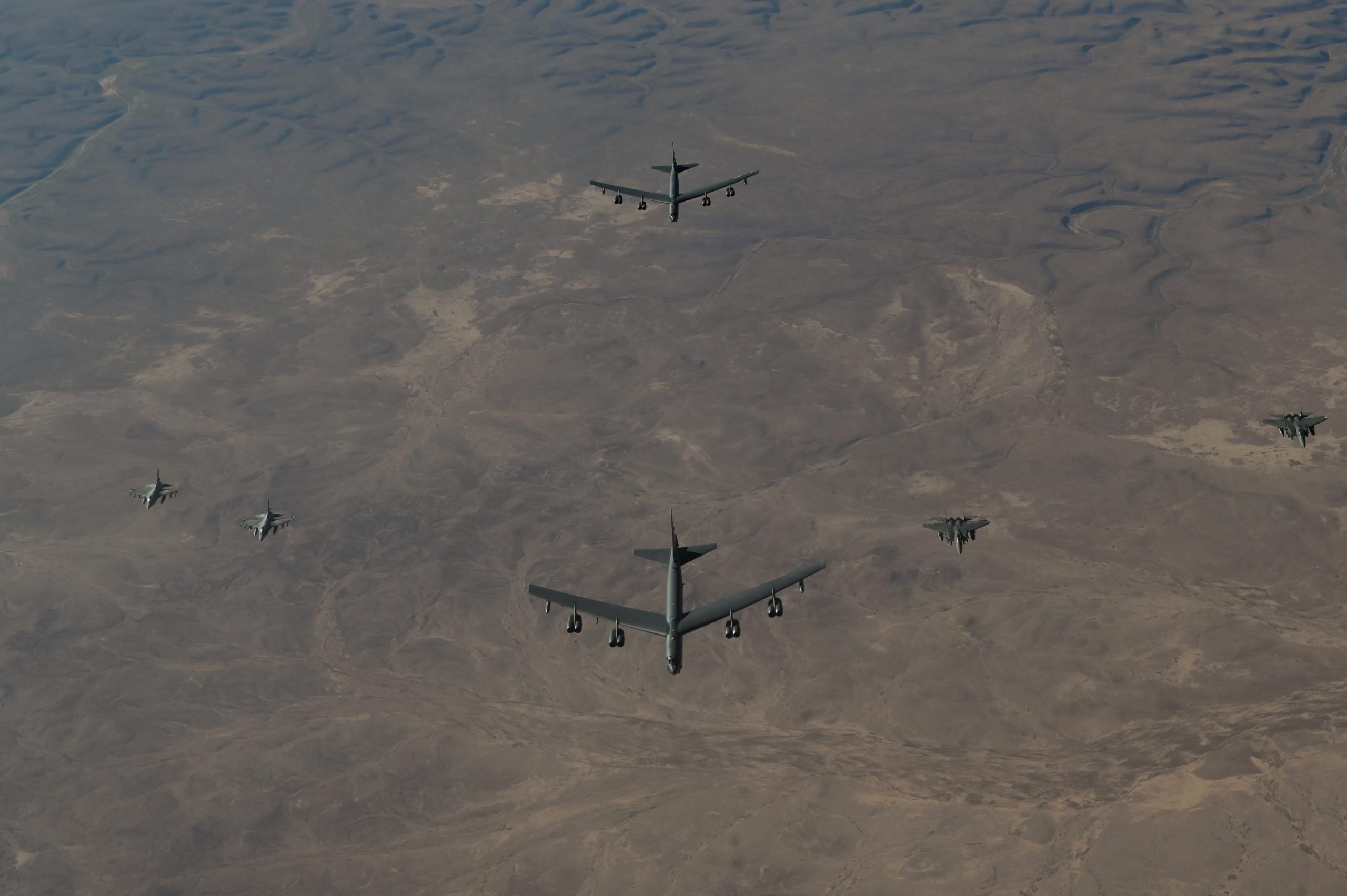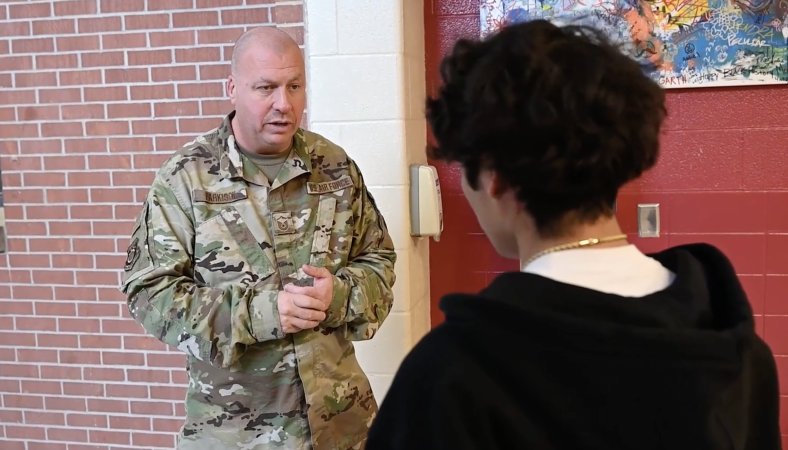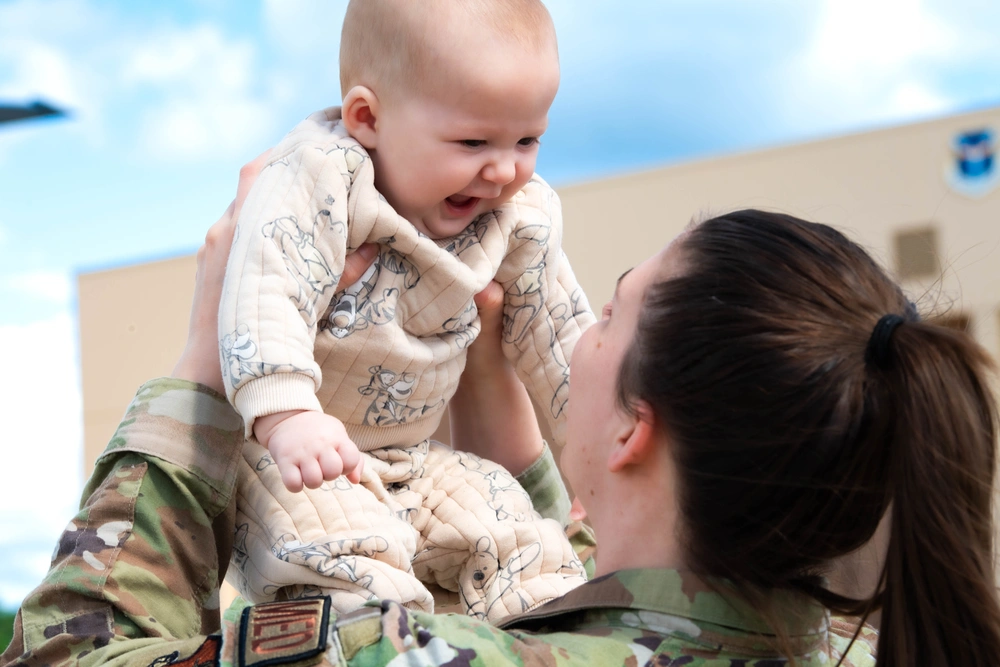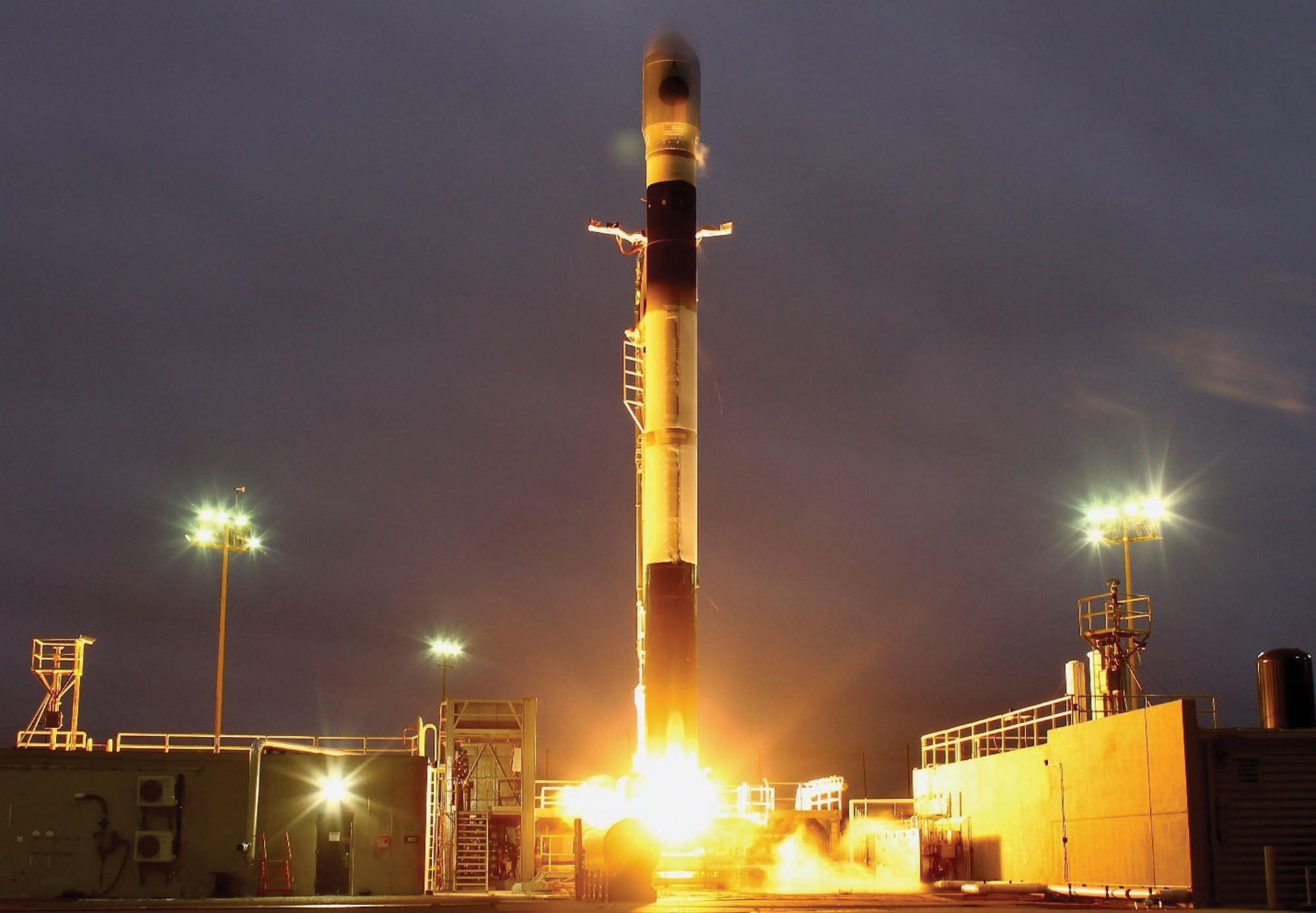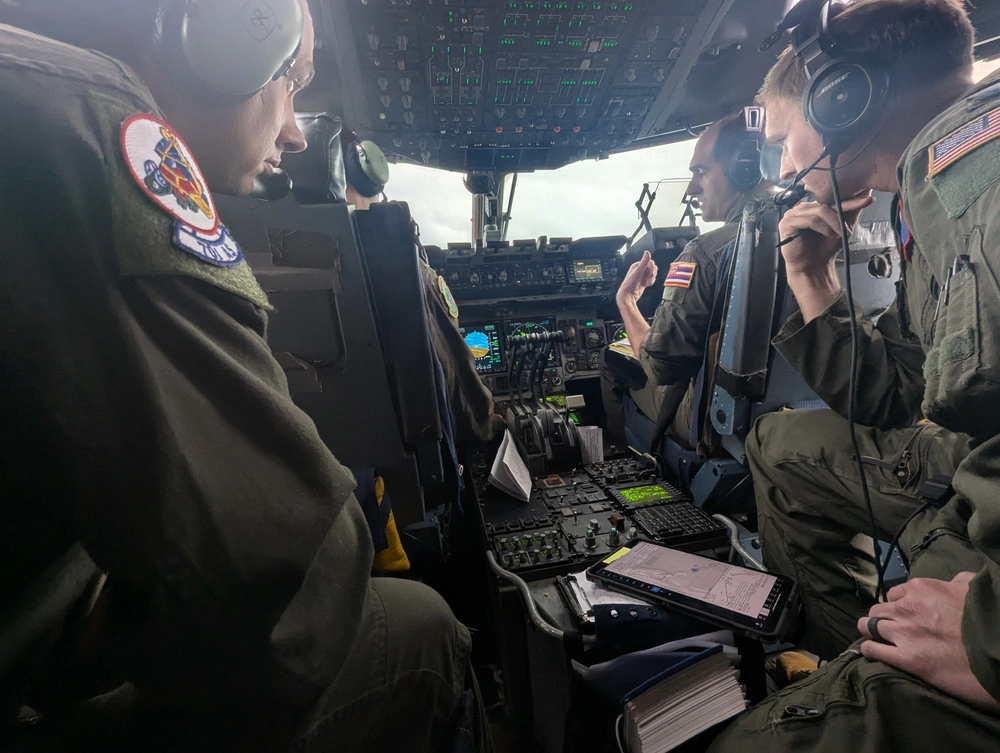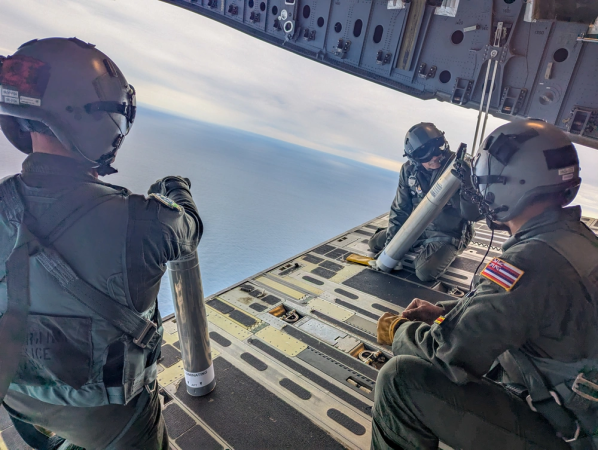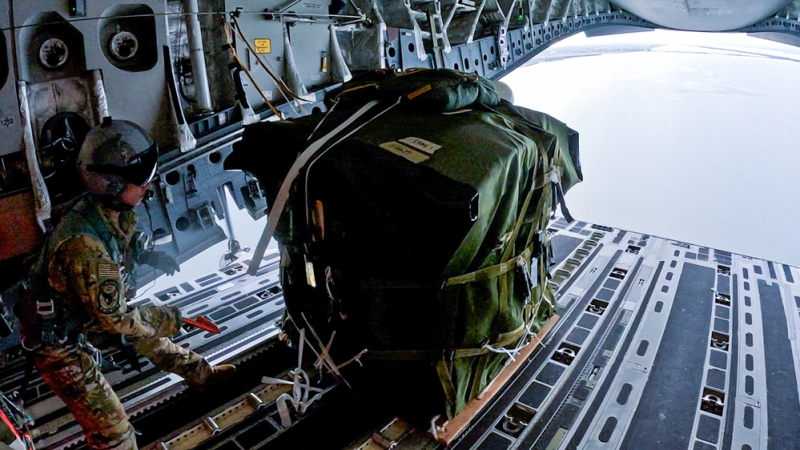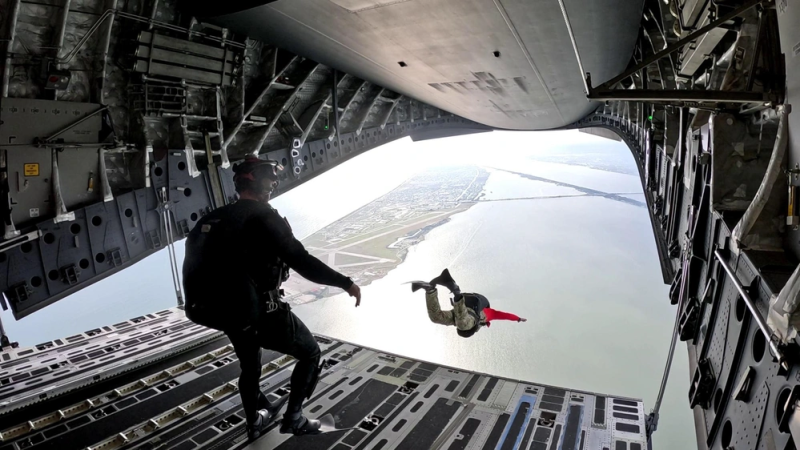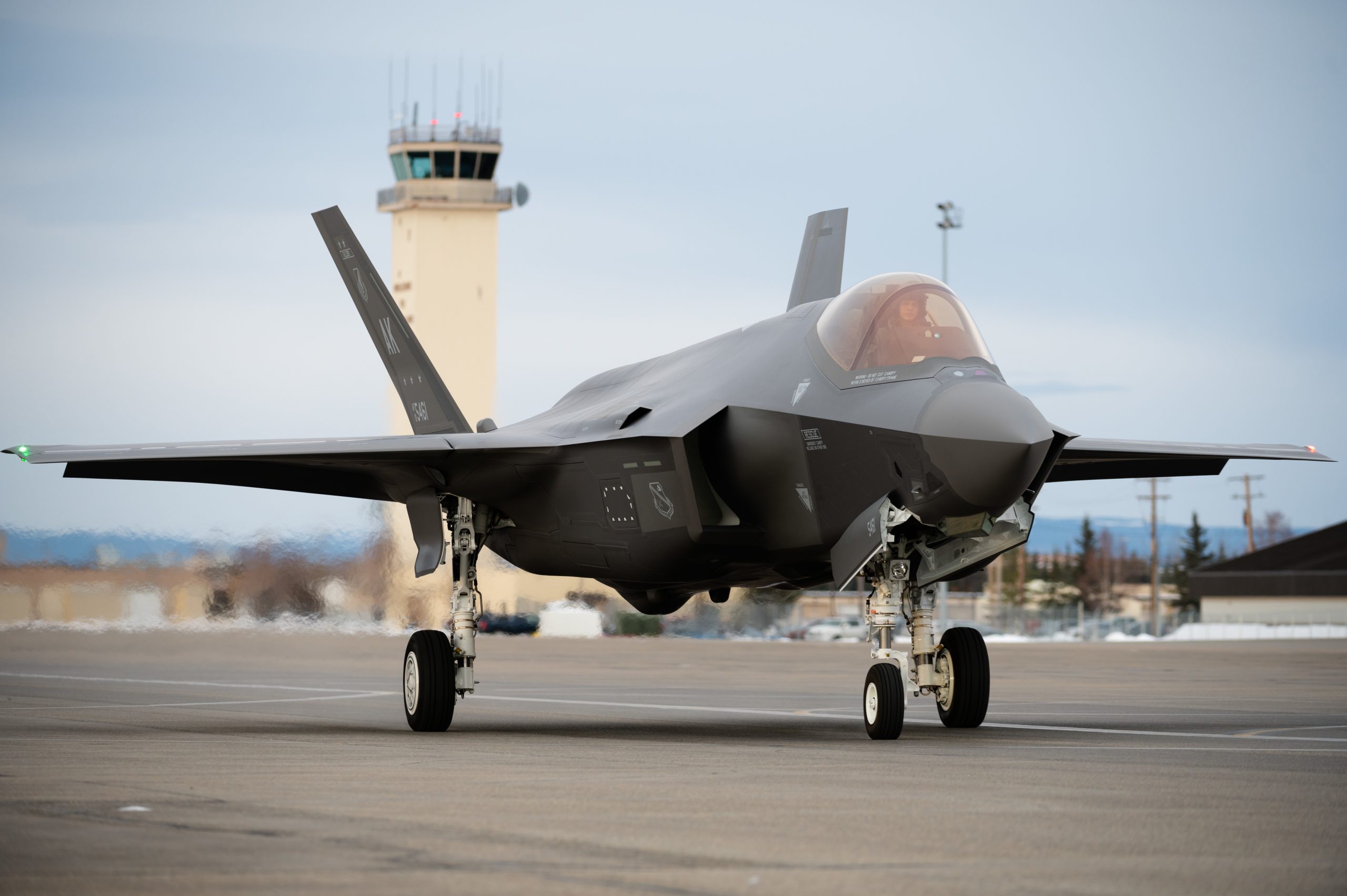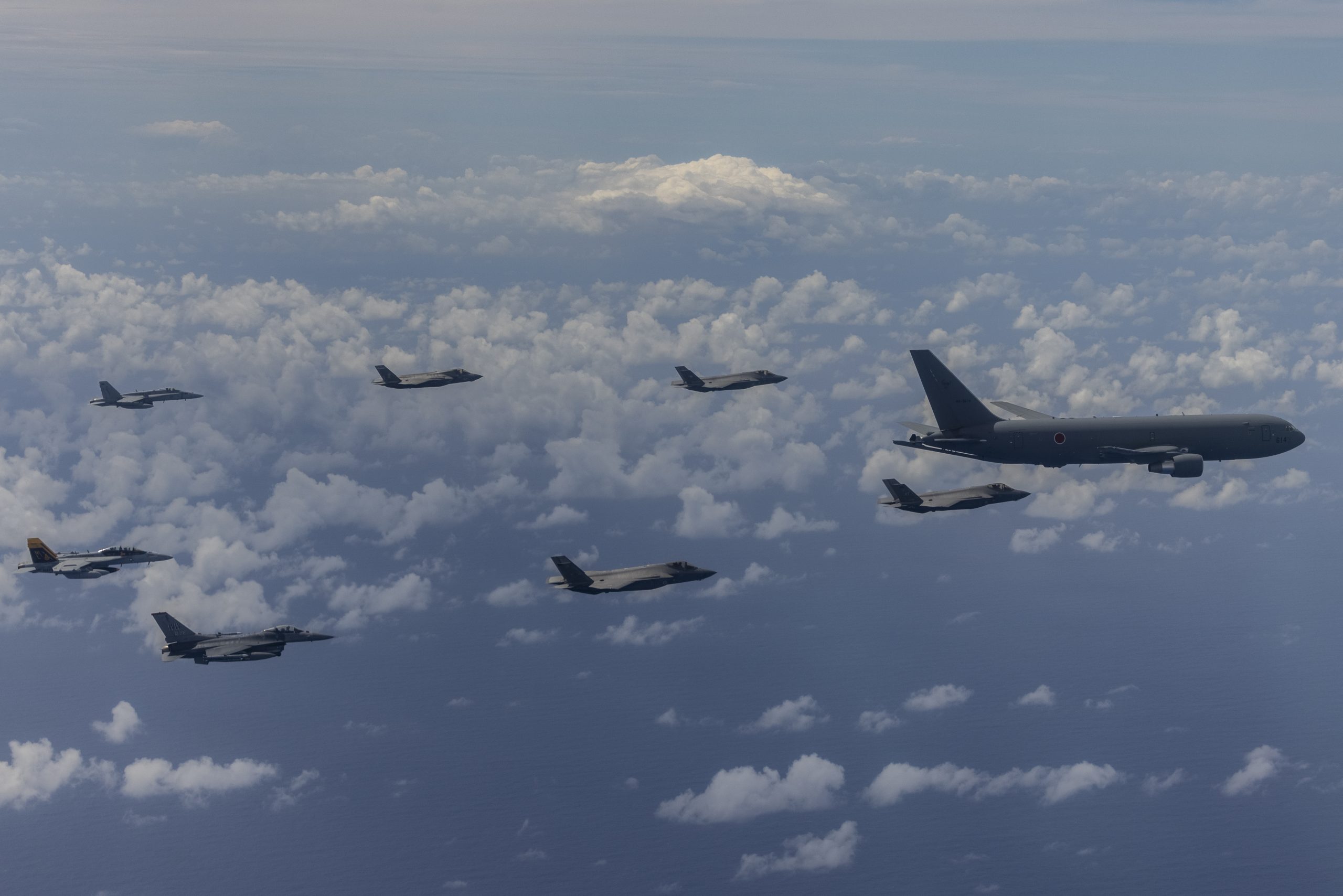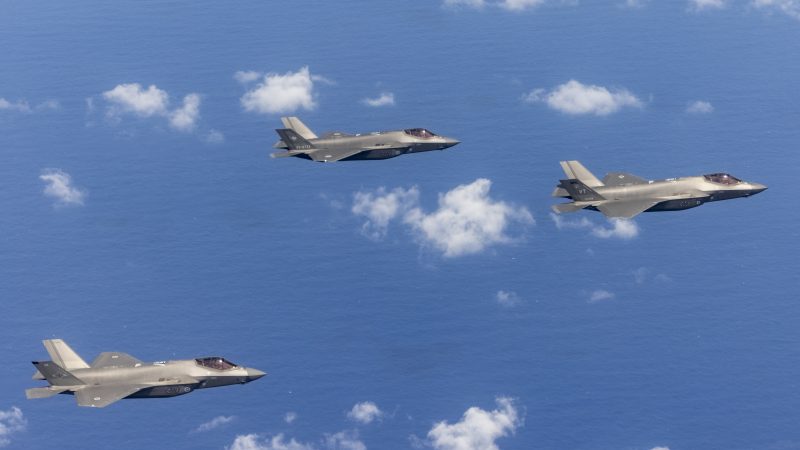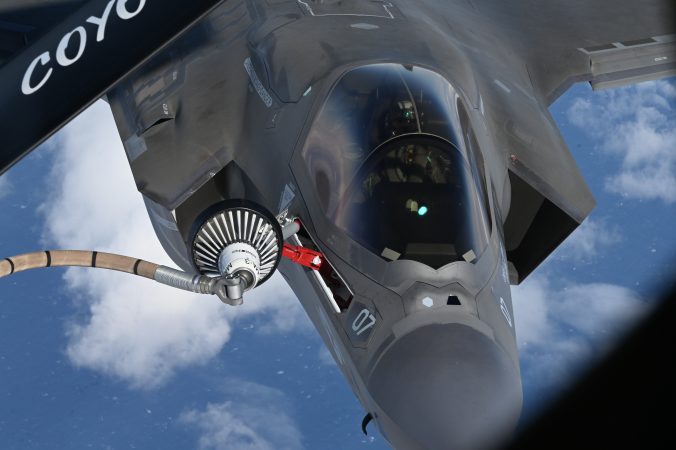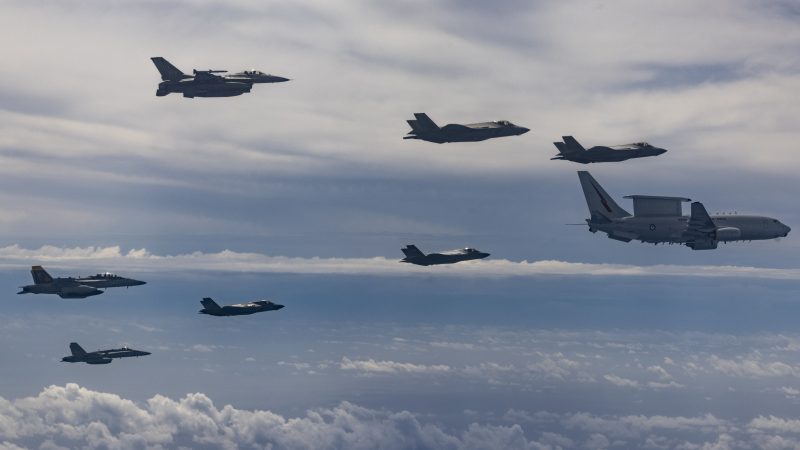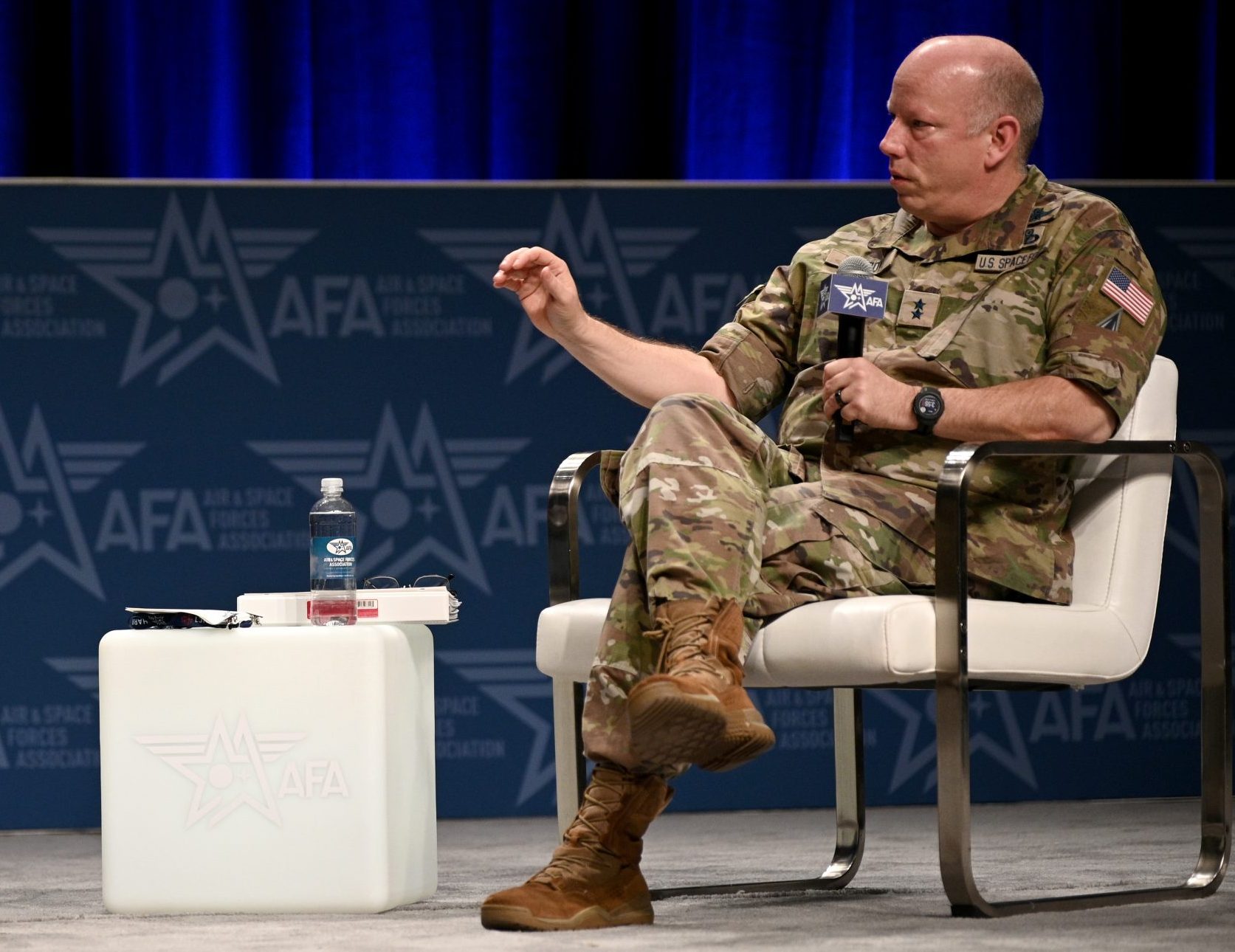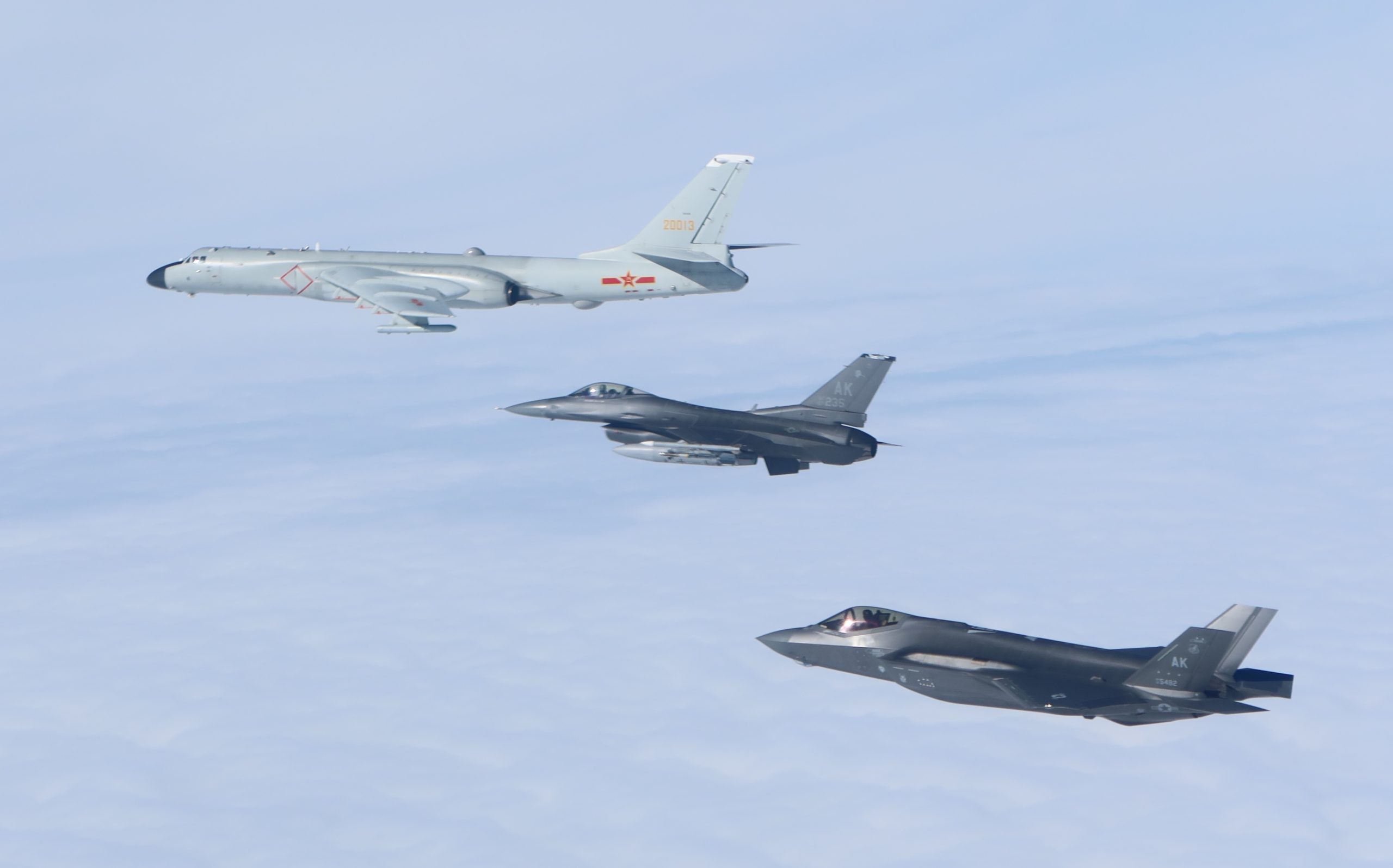Two U.S. Air Force B-52 Stratrofortress bombers flew over the Middle East in a “force projection” demonstration Feb. 17, U.S. Central Command (CENTCOM) announced.
The two B-52s began their mission at RAF Fairford, U.K., before flying across Europe and through the airspace of nine partner nations, according to CENTCOM. The command did not specify which nations those were, a common practice given regional tensions and sensitivities.
The B-52 mission also included “live munitions drops at ranges in several partner nations,” the command said in a news release. The B-52s flew with American F-15E Strike Eagles, which are based in the Middle East, and “four partner nations provided fighter escorts for the bombers throughout the mission,” CENTCOM said. Again, those partner nations were not publicly identified.
“Bomber Task Force missions demonstrate U.S. power projection capability, commitment to regional security, and ability to respond to any state or non-state actor seeking to broaden or escalate conflict in the CENTCOM region,” Army Gen. Michael “Erik” Kurilla, CENTCOM’s commander, said in a statement.
The B-52s involved in the Feb. 17 long-range mission over the Middle East are part of a Bomber Task Force deployed to Europe, BTF 25-2, which kicked off last week.
The B-52 mission came after the Navy aircraft carrier USS Harry S. Truman, which had been operating in the Red Sea and Gulf of Aden since mid-December, recently left the region. On Feb. 16, the U.S. Sixth Fleet said the Truman is currently in Souda Bay, Greece, for repairs after colliding with a merchant tanker off the coast of Egypt on Feb. 12.
Since Hamas’ Oct. 7, 2023, attack on Israel, the U.S. has maintained an increased force presence in the Middle East, primarily to deter Iran and its proxies. U.S. aircraft have defended Israel against direct attacks from Iran, conducted airstrikes against the Houthis in Yemen, and attacked Islamic State targets in Iraq and Syria.
In November, the U.S. temporarily deployed six B-52 to the Middle East, along with extra F-15Es, following the departure of the USS Abraham Lincoln aircraft carrier to provide additional airpower. Those B-52s conducted combat missions, including participating in airstrikes against Islamic State in Syria in December, before returning home before the end of the year. The deployment was the first time B-52s had been based in CENTCOM since 2019. The Pentagon has also surged additional assets, including more fighters, to the region during acute periods of tension over the past year and a half.
Four B-52s from the 69th Expeditionary Bomb Squadron at Minot Air Force Base, N.D., deployed to RAF Fairford for the task force, and some of the B-52s have already flown missions with European NATO allies in addition to the CENTCOM sortie. The B-52s that conducted the flight over the Middle East were tail number 60-0023 and tail number 60-0044, according to open-source flight tracking data.
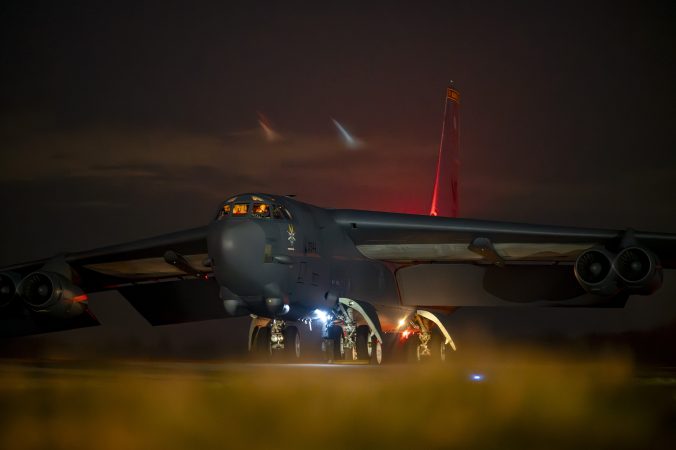
In a separate action Feb. 15, the U.S. conducted a “precision airstrike” in northwest Syria, targeting a senior official in Hurras al-Din (HaD), an al-Qaida affiliate, CENTCOM said. The U.S. military has stepped up its airstrikes against that group as well as the fighters and infrastructure from the Islamic State as it tries to prevent militants from taking advantage of instability in Syria following the fall of the regime of Bashar Al Assad in December. The U.S. has also taken advantage of the newly permissive airspace above Syria after the collapse of the Syrian military and the withdrawal of many Russian forces. President Donald Trump praised the recent airstrike in Syria and congratulated CENTCOM in a post on social media.
“We will continue to relentlessly pursue terrorists in order to defend our homeland,” Kurilla said in a Feb. 16 statement.
